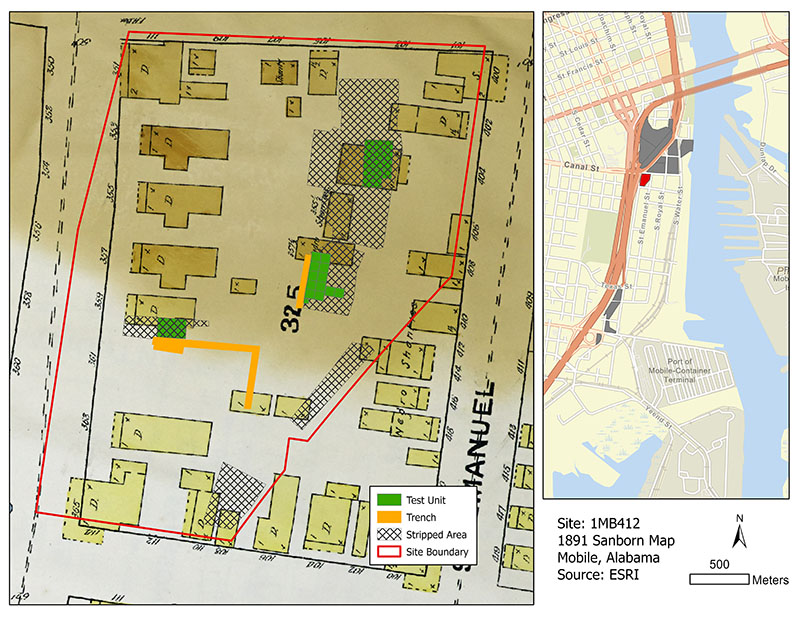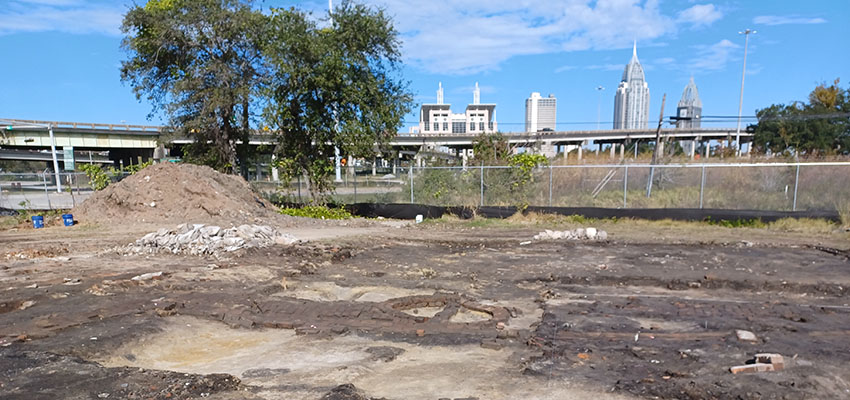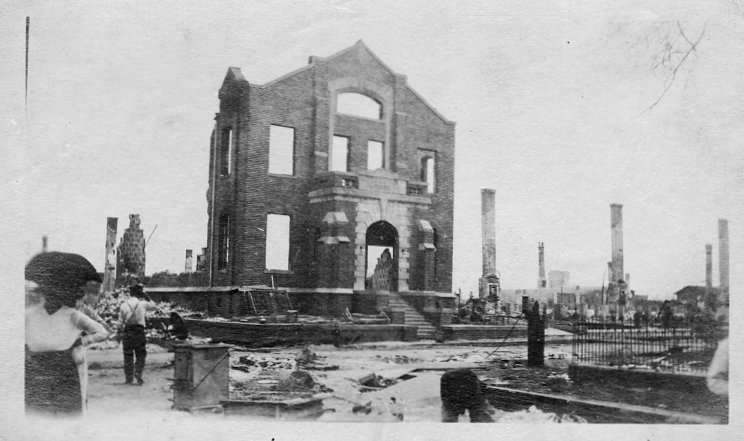Archaeology in Action: The Palmetto Street Site
Posted on August 30, 2023 by Rachel Hines
We excavated the Palmetto Street Site, or 1MB412, in 2022-2023 as part of the I-10 Mobile River Bridge Archaeology Project. This site is bound by the I-10 Canal Street Ramp, and Canal, St. Emanuel, and Palmetto
Streets. The Palmetto Street Site was primarily a residential area beginning in the
early 19 th century, and by 1840, there were six houses on the west half of the block.
 1891 Sanborn Fire Insurance Map of our excavations at the Palmetto Street Site in
2022-2023. Map
1891 Sanborn Fire Insurance Map of our excavations at the Palmetto Street Site in
2022-2023. Map
courtesy of the Library of Congress.
From the 1850s-1870s, the east side of the block along St. Emanuel Street was owned
by Andrew Green, a cooper. The cooperage buildings were later repurposed as “shanty”
housing, as shown on the 1891 Sanborn Map. Just north of there, we excavated a large
brickworks complex (shown below) consisting of eight house pier supports, a three
brick-wide dripline drain, a brick sidewalk, and a circular cistern base. Many children’s
toys were recovered from this area, including marbles and porcelain dolls.

Brick complex in the northeast corner of the Palmetto Street Site.
Like many of the sites from the I-10 project, this site was impacted by catastrophic
events. One feature, a potential cellar at 359 South Conception Street, appeared to
be destroyed or razed between 1904 and 1915, possibly as a result of the 1906 hurricane. Much of the site also showed evidence of the 1919 fire, which burned 40 blocks of Mobile.

The Wesley Settlement House at 351 South Conception Street after it was destroyed
by the 1919 Fire. Photo courtesy of the Historic Mobile Preservation Society.
Though we identified a few other interesting structures on historic maps, like the Mobile Wesley Settlement House (pictured above) in the northwest corner and a saloon on the southwest corner, we were unable to investigate these areas due to disturbance, especially from a former gas station in the northwest corner of the site. However, the site provides us with an opportunity to learn about residential life, especially for children, around the turn of the century.
We’ve excavated 15 sites for the I-10 Mobile River Bridge Archaeology Project. Stay tuned to learn more about our excavations and what we’ve learned so far!


